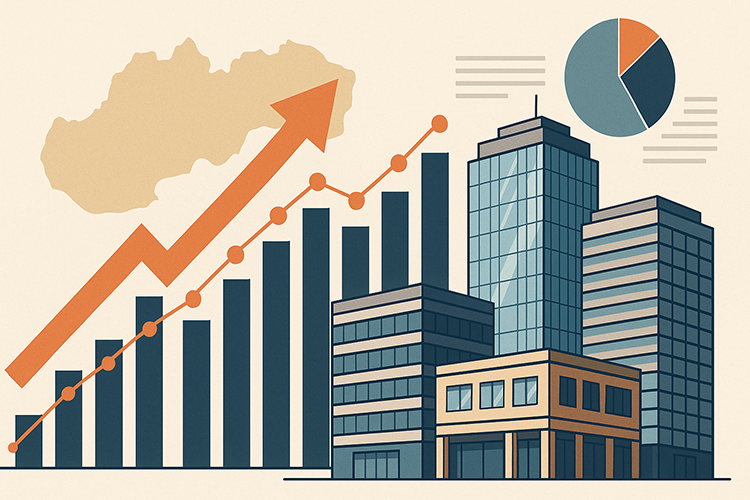Slovakia’s Commercial Real Estate Market Enters H3 2025 on Cautious Momentum
Slovakia’s commercial property market heads into the second half of 2025 with solid investment figures but mixed signals across sectors. After a strong start to the year, investors are showing renewed confidence, though the pace of new leasing and development activity is uneven and increasingly influenced by broader European headwinds.
According to data from several international consultancies, investment volumes in Slovakia exceeded €500 million in the first six months of 2025 — already outpacing the full-year total for 2024. Most capital flowed into logistics and retail assets, with office properties representing a smaller share. Analysts attribute the rebound to improving access to financing and a more balanced pricing environment after two years of limited transactions.
The logistics and industrial segment remains the cornerstone of the market, supported by new infrastructure and Slovakia’s role as a regional production and distribution hub. Developers are continuing to build, with roughly 240,000 square metres of new warehouse space underway. However, rising vacancies — now above six percent — suggest that demand is cooling after several years of rapid expansion. Some developers have begun offering more flexible terms to attract tenants, while others are pausing speculative projects until absorption improves.
Retail properties have drawn increasing attention from both domestic and regional investors. Retail parks in medium-sized cities are performing particularly well, supported by stable consumer demand and the entry of new international brands. Nevertheless, analysts note that shoppers are becoming more price-sensitive, prompting investors to focus on efficient formats and strong tenant mixes rather than large-scale speculative retail schemes.
The office market remains stable but subdued. Leasing is concentrated in high-quality buildings in central Bratislava, while older or less energy-efficient properties face greater competition. Limited new supply may help maintain rental levels, but many occupiers are renegotiating leases rather than expanding.
Residential real estate continues to be one of the economy’s most resilient segments. Apartment sales in Bratislava rose sharply during the first half of 2025, driven by returning diaspora buyers and constrained new supply. Prices have reached new highs, despite slower construction activity nationwide, reflecting ongoing demand for well-located housing.
Analysts caution that the strong first-half results could give way to a more restrained second half. Across Europe, transaction liquidity remains thin, and investors are still adjusting to higher borrowing costs. Within Slovakia, industrial and retail assets are expected to remain the most active categories, while office investment will likely stay selective.
Despite these challenges, Slovakia continues to attract regional interest due to its central location, stable economy, and growing transport infrastructure. Industry experts suggest that 2025 could close with total investment approaching €800 million, provided that financing conditions and investor sentiment remain favourable.
As the market enters the final quarter, the focus is shifting from volume growth to long-term value — with sustainability, adaptability, and cost efficiency now central to how both developers and investors evaluate opportunities.









